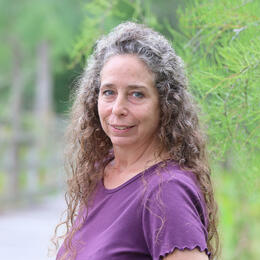Many people enjoy watching birds—out their window, on a bird feeder, or in passing while in nature. For some, the hobby becomes more of a passion during migration, when the lure of getting out and seeing a larger variety of different species is hard to resist. The Audubon Florida Birdathon, hosted April 20 – 26, 2024, aimed to engage bird enthusiasts of all skill levels in the hobby wherever they choose in Florida.
For this year’s Birdathon, I had the pleasure of birding with Keith Laakkonen, a Southwest Florida native. The director for Corkscrew Swamp Sanctuary is an experienced birder who is very familiar with regional birding hotspots. While we could have conducted our Birdathon in some really wild outdoor spaces, we instead checked out a short list of coastal neighborhoods and urban parks. We were not disappointed.
We started our trek at Tigertail Beach County Park on Marco Island, where we saw a handful of shorebirds and waders feeding in the shallow lagoon. Surprisingly, we saw even more species between the parking lot and the beach, amidst a swath of gumbo limbo trees, sea grape trees, and dune plants.
Fresh off their long, migratory flights, birds find fruit and seeds, glean insects from leaves and bark, forage for insects in the air, and even gorge on nectar and pollen in this sliver of habitat that most people barely notice.
That was where we spied a Gray-cheeked Thrush dive for cover in the underbrush. The long-distance migrant, likely exhausted from its overnight flight across the Gulf, will continue its northward journey with another stopover in the Great Lakes before arriving at summer breeding grounds on the Arctic tundra.
After documenting 19 species at the beach park, we headed to the island’s Otter Mound Preserve, one of the highest points in Collier County. This ancient shell mound is about two acres in size and, while houses surround it, is covered with tropical hardwoods and other native Florida plants. Here, we counted 17 species, including Black-throated Blue Warbler, Cedar Waxwing, and Yellow-billed Cuckoo.
We made a few more stops on the island, picking up a Magnolia Warbler and Black-whiskered Vireo before returning to the mainland for some true urban birding at Cambier Park. Located in the heart of downtown Naples, just south of the prestigious 5th Avenue South shopping and restaurant district, Cambier is a 12-acre city park packed with ballfields, picnic pavilion, and playgrounds for children. Situated around and between the attractions for people are giant, gnarled banyan trees, black olive trees, gumbo limbo, and mahogany—a sumptuous buffet for insects and migrating birds.
There we saw several other birders following the feeding flock from tree to tree, craning their necks to see through binoculars and spotting scopes. “Did you see the Kentucky Warbler?” one asked. “There’s a Rose-breasted Grosbeak!” another called out. American Redstarts seemed to emerge from thin air, bopping from tree to tree. We recorded a whopping 26 species here, including nine species of warblers!
After hitting eight known hotspots in the Marco Island/Naples area, we ended the day with 79 total species and some great photos. I came away with a new appreciation for the slivers of green space that remain along our coast. The birds need them, and it is my hope they continue to exist as places birds need into the future.











